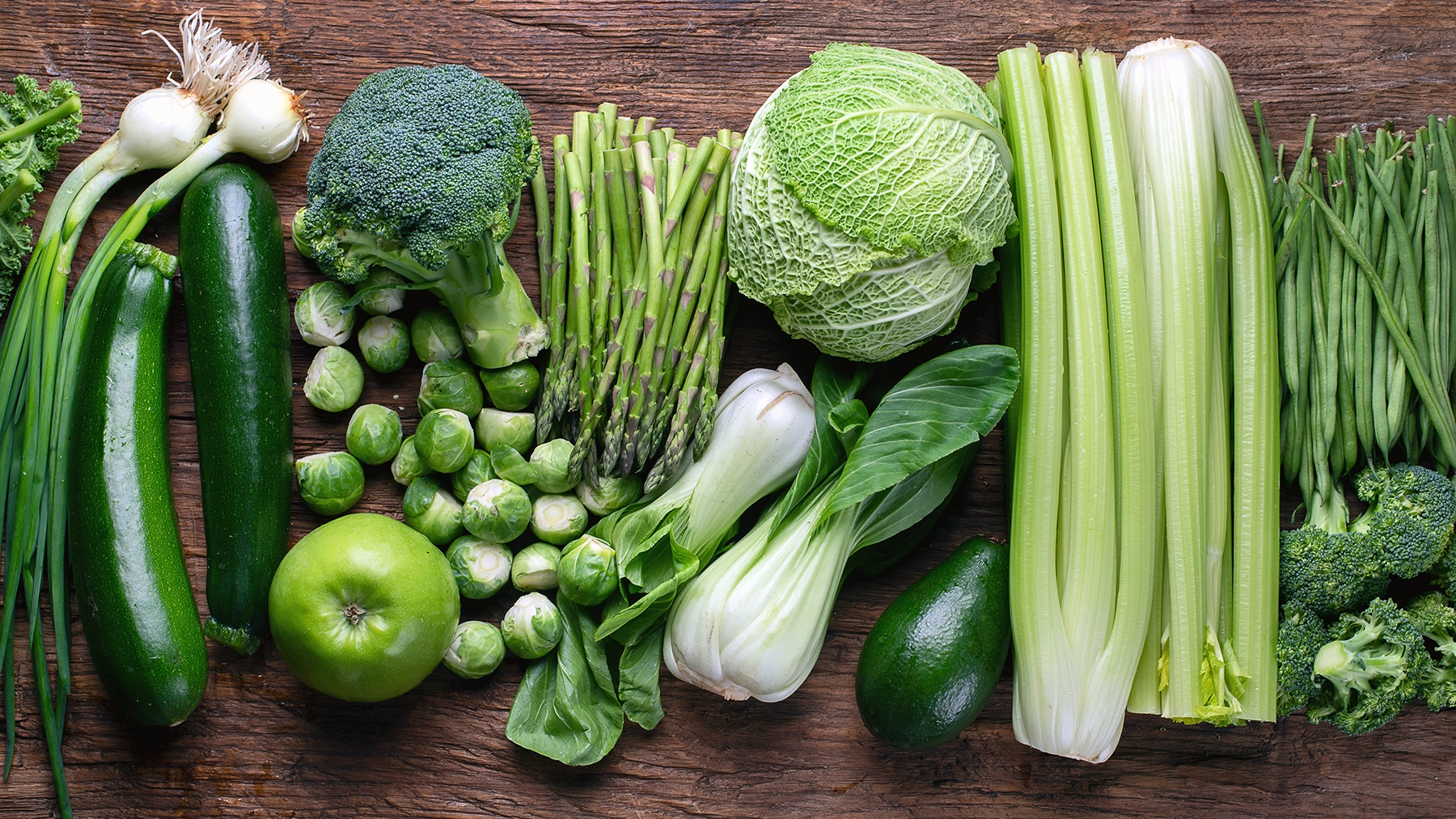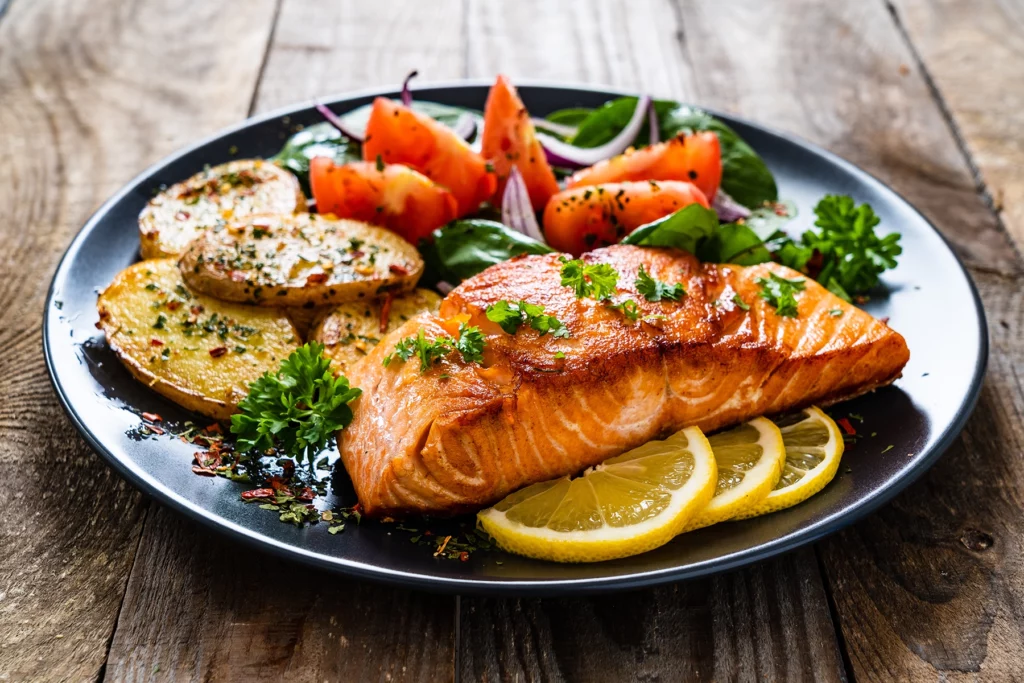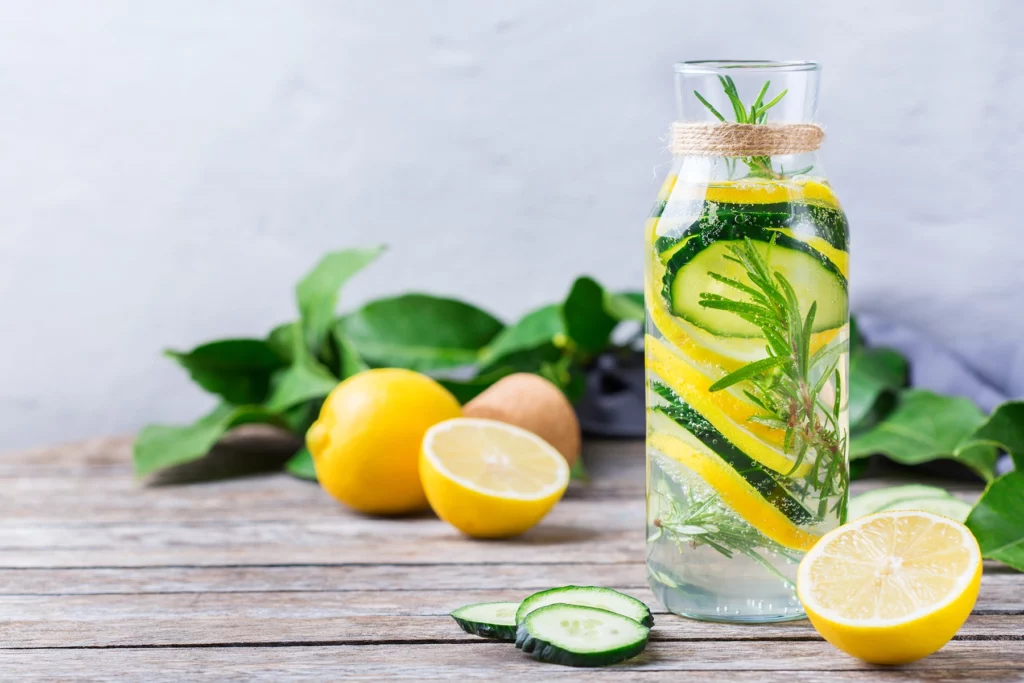Embrace Seasonal Eating
Today, as I picked up my new batch of fresh in-season veggies and herbs, it reminded me it was time to share with you how we ate the fresh from-the-farm food we received last week in our seasonal eating journey.
Last week, we got a lovely, big bunch of fresh produce and had a lot of fun eating all the veggies, including green garlic, a bunch of kale, head lettuce, fava beans, and snap peas. Our herb bunch included mint, sage, thyme, and oregano. We love the health benefits of eating local, seasonal agricultural produce.
The only thing we had a hard time using were the fava beans, but that is because it was rainy and cold until the weekend (when we were out of town), and we were waiting to throw them on the grill! Learning how to cook with each season’s fresh produce and during summer does have challenges, even when starting small and with the help of quality recipes.
The Food:
Here’s a quick list of how we used our fresh produce this week:
- Lettuce: salad, sandwiches
- Garlic, Kale, and Sage: sauteed in butter, stir-fry
- Fava Beans: grilled and salted
- Snap Peas: snacks and stir-fry
- Mint: salad
- Thyme and Oregano: veggie bake
The Details:
Lettuce
This week, we didn’t use the lettuce right away. Lettuce is definitely in season right now, and in addition to the CSA and produce stands, we also have lettuce growing wild in our garden. As the first part of the week was rainy and cold, we only used the lettuce dinner last night. It’s a very reliable, versatile produce.
We made a great big salad with roasted chicken tossed with homemade ranch dressing for dinner. We threw in a bunch of pre-diced veggies that were left from taco night the previous day: yellow peppers, carrots, cherry tomatoes, black olives, and zucchini.
Garlic, Kale, Sage
The minute we got home with our CSA haul, I knew I wanted to sautée these three items together to eat as a side dish with the white fish we were having for dinner. I cut the kale and sage into ribbons, thinly sliced the garlic, and sautéed them in our cast iron skillet in plenty of butter and olive oil.
I tossed in a tiny bit of lemon juice and a splash of a rosé we had open in the fridge to add a little brightness to the flavor right at the end. Even the kids liked its taste, and the bitterness of the greens ideally complemented the fish’s sweetness.
Fava Beans
After the weekend finally brought warm and dry weather, we took out the grill and cooked up the fava beans. We drizzled them in olive oil, sprinkled with salt, and grilled the bean pods until the outsides were a little charred.
Then we peeled them open and ate the beans inside. I think of them as giant edamame. You can also boil them in salted water if grilling isn’t an option. We find them to be a delicious pre-dinner snack.
Snap Peas
Snap peas are vegetables that never last too long in our house. The kids ate at least half of the order before dinner the night I brought them home. The other half went into a simple stir-fry I made the following night.
For the stir-fry, I rough chopped the peas, some mushrooms, bell peppers, sweet potatoes, and broccoli and lightly sautéed them. Then I added them to the sauce made of coconut milk (full fat), Bragg Liquid Aminos, garlic, some red curry paste, and a splash of lime juice. They simmered until the rice finished cooking. You could always toss in a little sprouted tofu or meat for some added protein.
Voila. Simple, nutritious, and tasty dinner on a weeknight.
Mint
I used the mint in a tasty little salad that we brought to a potluck on Saturday. The salad had green and purple cabbage, cucumbers, carrots, and green onions. I then marinated some watermelon in lime juice and cayenne pepper and added it to the salad. I tossed it in a dressing made of Bragg Liquid Aminos, lime juice, sesame oil, olive oil, ginger, and mint.
Finally, I topped the salad with a few chopped peanuts. It was so tasty, and the mint gave it just the right balance. It was delicious food that could fulfill a diet’s requirements.
Thyme and Oregano
We tossed thyme and oregano into one of our weeknight staples: the sausage and veggie bake, which I love to eat. I rough-chopped seasonal veggies (in this case, I used potatoes, beets, carrots, cauliflower, broccoli, and mushrooms), threw in some sliced sausage links, and tossed them all with olive oil.
Next, I topped them with some onion, garlic, thyme, and oregano. Then, it gets baked in the oven until the potatoes and beets are tender. We served this with various mustards, but I have sometimes also served it with pesto or romesco sauce. Mustards or the sauces are excellent when you can source from local growers.
Where You Can Find Seasonal Food That Benefits The Local Economy
Are you ready to start buying local, seasonal food? Seasonal eating takes some effort. To make it easier, you can rotate between a few resources for your fruits and vegetables as well as your seasonal fruits. You may need to go grocery shopping to supplement your fresh deliveries, especially for root vegetables. Still, overall, your in-season items, such as fresh fruits, should be easy to find at the usual spots.
Your local farmers’ market is an ideal stop for fruits and vegetables that are in season. Using local natural resources and supporting your farmers’ market also impacts the local economy. Plus – have you ever had fresh-from-the-farm strawberries? They’re the best!
Regardless of the season, harvest time will affect the availability of produce and other foods at the farmers’ markets and grocery stores. For out-of-season produce and whatever you can’t find at a farmers’ market, you’ll need to find your fruits and vegetables at the grocery store while you’re shopping for other items. When you’re at the store, be aware of food that’s been harvested early, and make sure you let unripe fruit ripen naturally. When it comes to grocery store produce, I tend to buy vegetables like hardy Brussels sprouts.
Another way to access sustainable food is to participate in your community garden. Even local restaurants find this to be a popular idea and a way to begin supporting the local community. You can learn all about gardening if you endeavor to make it part of your life. Gardening lets you know about crops on a small scale.
Gardening is easier to do in spring and summer, but most communities also have plenty of educational classes during the fall and winter seasons. You can take this time to learn which foods are rich in vitamins and other nutrients, for example. Or you can spend the winter months finding fun ways to commit to eating local food.
The best part of seasonal eating from a local farmers’ market is that your purchases there benefit the local farms and the farmers that grow them.
What Does it Mean to Eat Seasonally?
While we’ve discussed this in other posts, I hope you are inspired by the review here as part of our seasonal food guide and seasonal foods listing. Seasonal eating means consuming produce and other fresh foods in season. It can mean growing your own food, but overall, seasonal eating means you can get fresh food from local resources. Plus, eating foods that are in season means you’ve got more ways to access fresh food while supporting local farmers.
If you want to learn more about nutrition, check out our Functional Nutrition page.
Enjoy your seasonal eating journey!







